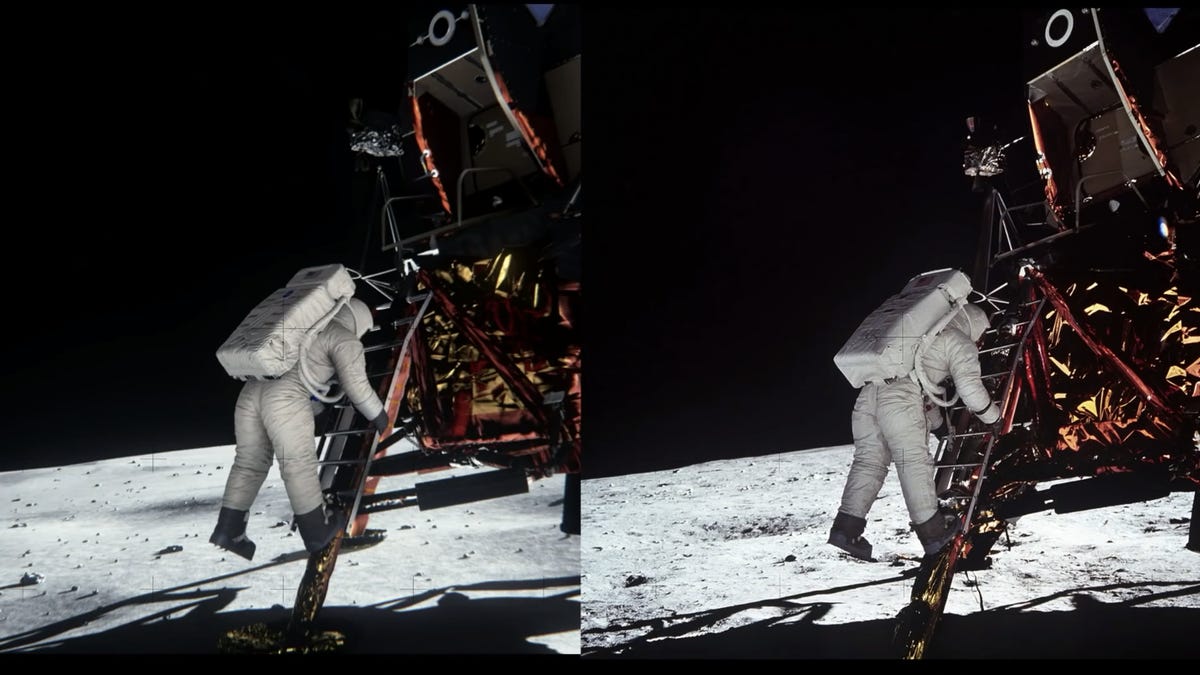Nvidia updates its moon landing conspiracy debunk with its new GPU
In 2014, Nvidia used technology to prove photos from the moon landing couldn't be fake. Now, it's using its new ray-tracing RTX GPU to do it again.

Can you tell which photo is from the real moon landing and which is an Nvidia render?
Neil Armstrong and Buzz Aldrin walked on the moon almost 50 years ago, but some conspiracy theorists don't believe that it actually happened. One point they often make is that the lighting in the moon landing video is off. They claim that Aldrin wouldn't be illuminated (as seen in the photo above) because he was standing in the shadow of Apollo 11.
Graphics computing company Nvidia is proving these conspiracists wrong. Again.
In 2014, Nvidia was able to use its GeForce GTX graphics processing units to realistically render the way light would behave on the moon, creating a near identical image of Aldrin backlit by the light bouncing off Armstrong's space suit.
Four years on, on Oct. 11, Nvidia recreated its moon landing recreation with its new Turing GPU tech. Turing comes with real-time ray-tracing technology, which can capture the reflection of light as it happens. Nvidia says the updated demo only made its original conclusion stronger.
Writing on the company blog, Nvidia's Brian Caufield says, "All of this only heightened the fidelity of our latest demo -- and re-confirmed what we'd discovered four years ago. That the illumination of the astronaut in the photo wasn't caused by something other than the sun -- such as studio lights -- but by light doing what light does."
Nvidia's tech can simulate light physics to make things look the way they should look. With it, Nvidia determined that it would've been impossible to artificially create the moon landing in a studio in 1969, even if it were directed by Stanley Kubrick.

